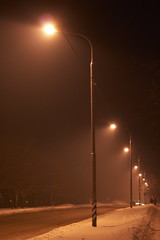This is a tricky post to write, because the people who offer to walk me home are friends who like me enough that they want to trade their own time and convenience for my safety. That is incredibly nice, and if one of said friends is reading this: your affection and concern are noted and I am not ungrateful. I'll usually turn down these offers, though; it's one part stubborn independence and three parts political statement.
I am zealously protective of my freedom. That freedom is severely curtailed if I adopt the viewpoint that I need an escort to walk around at night. Women need to be able to wander around by themselves, to take the late bus home after getting drunk downtown, to stroll over to friends' houses after dark. They shouldn't have the additional economic burden of having to have a car just because they're female. It's not fair or reasonable.
Part of our fear is due to a common misconception about rape. American women are frequently subjected to sexual violence, but it's not from crazy men jumping out from the bushes. It's at the hands of men they know. Really, a woman is safer walking home alone than she is with a male friend.
There's also a frequent worry about "bad" neighborhoods. Now, if you actually have statistics that X neighborhood has an unusually high rate of stranger-rapes and muggings, that's one thing. But mostly people just equate black neighborhood with "bad" neighborhood, and I refuse to participate in that.
It's up to each of us, obviously, to decide when and where we feel safe. I happen to feel safe walking home alone after dark in Gainesville. After all, they caught Danny Rolling.

To me, your post touches on two of the most important things to think about in this kind of scenario: event probability and event valuation.
ReplyDeleteGiven a set of events X = {x|x is an event} with a set of event probabilities P = {P(x)|P(x) is the probability of event x} and a set of event valuations V = {V(x)|V(x) is the value ascribed to event x}, the expectation value is given by = sum (over x in X) V(x) * P(x). Both P and V are dependent on the priors for the person experiencing the events.
So for you, the set of possible events for walking home at night includes violent assault but the probability is low and the comparative valuation based on your desire for freedom is relatively low. Thus your expected value for walking home has a high personal valuation.
I find this type of approach useful in understanding many situations where I see someone take a different approach than I (or someone else) would have. For instance, take a bar setting where a man approaches a women and tries to chat her up. Though the event is the same, the priors can be quite different. For a man, the event can easily have a slight positive or neutral valuation (e.g., they have little risk of bodily harm, and they might have a positive encounter (however they define that)). For a women, the event can easily have a negative valuation (e.g., most of the men who have tried to chat them up before were jerks who wasted her time and reminded her about how much the patriarchy sucks).
For me, as a privileged person, I find it useful to help me remember that my experiences are not universal, as your post states.
Andrew, if you don't write a guest post for us soon, I'm going to start taking your comments and publishing them as posts instead :D
ReplyDeleteYou're free to bump my comments, if you like, but this one in particular needs a few charts.
ReplyDeleteOne thing that I find interesting about the worries about certain neighborhoods etc is that it makes the monster "Out There," which, as you pointed out, is unlikely. Most women (and some men) will be assaulted by men then know or at least they at least know through mutual friends.
ReplyDeleteWhen we do make the monster Out There we ignore the monster within i.e. the ex boyfriend, the mutual friend of friend, the person we meet at a party, etc. It is one way that keeps women in danger.
There's a similar argument made with the stereotype of homosexual men as child predator. By typecasting the villain as outside the family, people tend not to look for signs of abuse from within their own circle. By keeping the Monster outside of their sphere they unknowingly ignore what might be right in front of them.
@Elizabeth You're totally right about the misrepresentation of dangers, shifting the source to something Out There.
ReplyDeleteI think it's similar to how media reports health risks (http://www.canadianmedicinenews.com/2008/02/why-does-media-muck-up-health-coverage.html) -- risks with low morbidity like SARS get less coverage than high morbidity risks like smoking. For various reasons, media exposure differs from reality, which gives people the wrong impression about the relevant prevalence. This is particularly harmful in cases like sexual assault and abduction, as the biggest danger is from those close to the victim. Yet the impression from the media is that all missing children are White blonde girls and that sexual assault happens most in dark alleys and byways.
Often these narratives reify the notion that femininity is White and fragile, needing to be protected while non-White masculinity is aggressive and threatening. This narrative has existed in some form for at least 150 years, yet it persists (and is present all over the US, not just in the South).